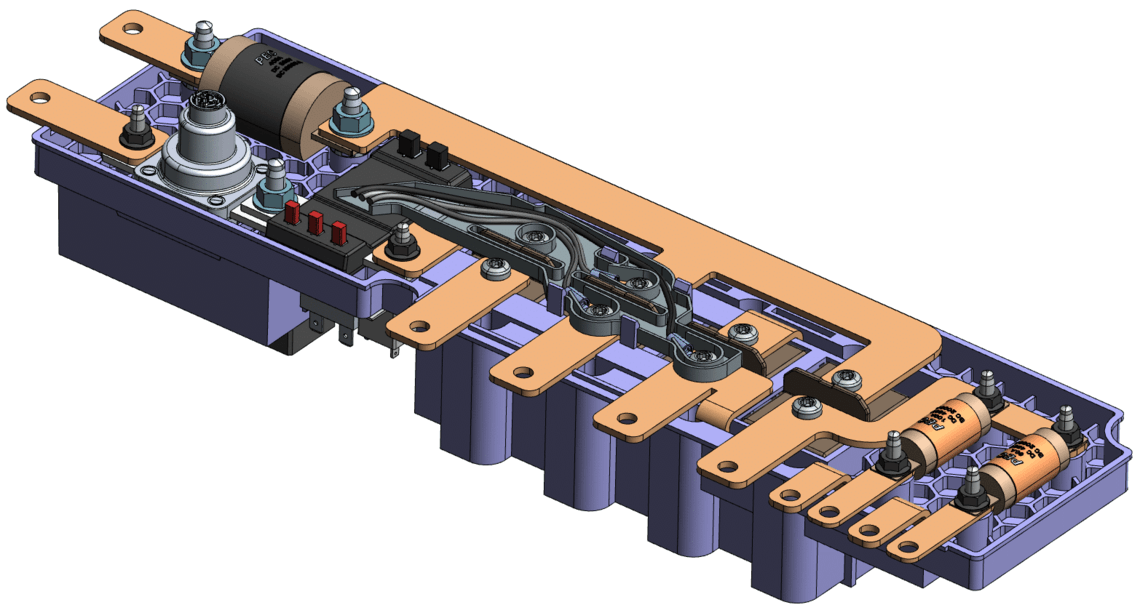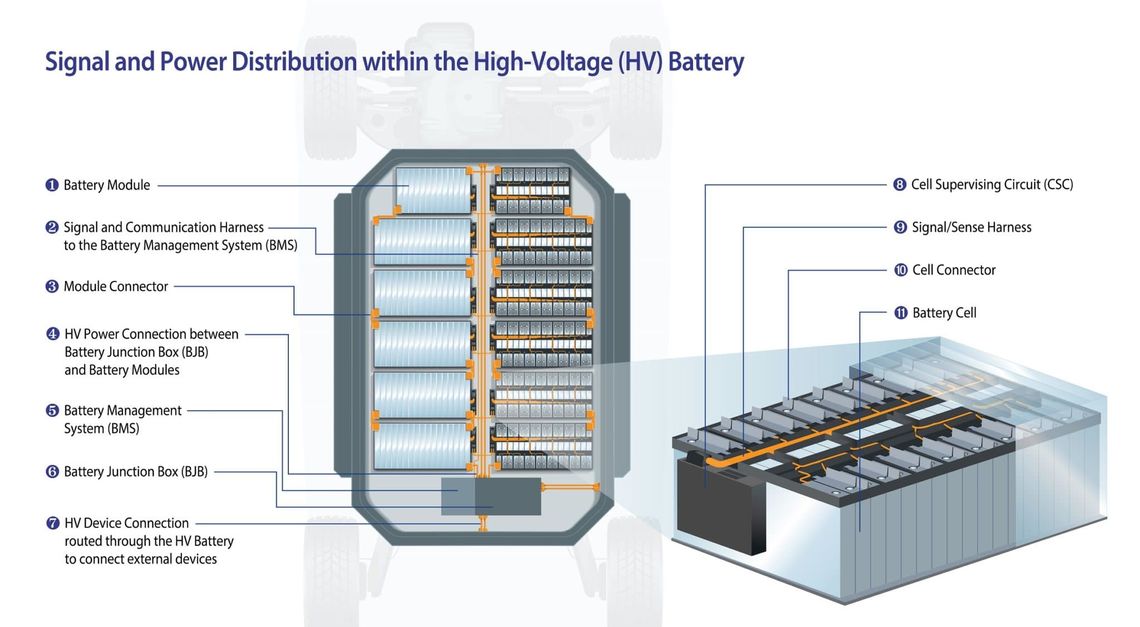Batteries packing a punch: potential for optimizing space, costs and weight
23. JAN 2020
Maximum energy density, high power charging, extremely safe and as cost effective as possible; the most important requirements for electric car batteries are quickly described. Batteries based on lithium-ion technology have made big progress in all sub-disciplines over the past few years. When future developments are discussed in the media or at specialist conferences, the spotlight usually falls on cell chemistry. Solid-state batteries with metallic anodes do indeed appear to be a realistic option for raising energy density further one day. Yet in the years to come, when electromobility really gets going, conventional battery systems will dominate the market. The system structure therefore has an important role to play: Only when all components beyond the cell are optimally designed, it will be feasible to further improve the ratio between energy density and costs. As a specialist in intelligent energy and data management, we as LEONI can make a significant contribution in this regard – over all the three levels that define the structure of a traction battery: cell, module and overall system.
At the cell level, we see the potential for interfacing simpler and therefore more economical than compared to the current possibilities that use individual cell connectors. In collaboration with Diehl, a cell-connector unit for prismatic cells was developed that uses a frame, comprising all electrical conductors for the whole module. The cables and interfaces which are equipped with voltage monitoring and temperature-reading sensors are integrated for the module connection and for cell-condition monitoring purposes. Such a cell-connector unit can be assembled with a high level of automation using laser welding technique. Going further, the degree of automation might even be enhanced by combining multiple cell-connector units into a single larger module and interfacing them together.

Production-optimized version of an HV Battery Junction Box (BJB).
Across the sector, depending on the cell geometry used, connecting individual cells in parallel and series into ready-to-install modules, has established itself. And in most cases the operating levels remain below the 60 volts that is critical for touch protection. The modules are interconnected in strands until the battery’s rated voltage (400 or 800 volts) is reached. Now a days the customer, i.e. either the vehicle manufacturer or the battery-system supplier, specifies the module connector. Both braided copper conductors and busbars made of copper or aluminum are used. As a development partner, LEONI supports the design process especially with regards to optimally forming welded metal connections as well as the fixing points, since both have a major influence on long-term stability. Additionally, using our simulation know-how, we can further ensure the adherence to thermal requirements with minimal utilization of materials and thereby contribute to lower system weight.
At the system level, the Battery Junction Box in development by LEONI provides a way to further simplify the overall structure. This high-voltage junction box, which can be integrated in the battery casing, is the key interface between the high-voltage component of the wiring system and the energy storage. It represents the entire power management, that comprises fuse functions such as the main fuse, a pyroswitch-triggered fuse for the event of crash, and high-load relays required for the circuit. Functional models of the box are currently being assembled and will be available for initial tests in the near future. LEONI’s junction box contains a small electronic device by which the relays and contacts are directly controlled. Corresponding interfaces ensure the exchange of information with the battery-management system. LEONI believes that the junction box is suitable for highly automated production well in the designing phase. The prerequisite is a structure based on which all assembly stages follow the same direction (“bottom up”).

Power and signal management in an electric car’s battery
Electrical power management at the cell, module and system levels should in our opinion always be considered holistically. The key is to weigh many decisions against one another; for example, the gravimetric advantages of aluminum versus the greater space needed and the transition joints to copper conductors that may be exposed to risk of corrosion. Ideally, the method is the same as in the case of high-voltage cable harness outside the battery: Development starts with an overall system design that meets not only the technical specifications with respect to current carrying capacity but also achieves an optimum weight and takes later assembly processes into account. Our expertise as a systems partner for the automotive industry can support such a process and thereby influence installation space, cost and weight savings significantly.
Do you have a question?
We’ll be glad to help. We look forward to hearing from you.
Phone +49 9321 304-0
E-mail blog@leoni.com







